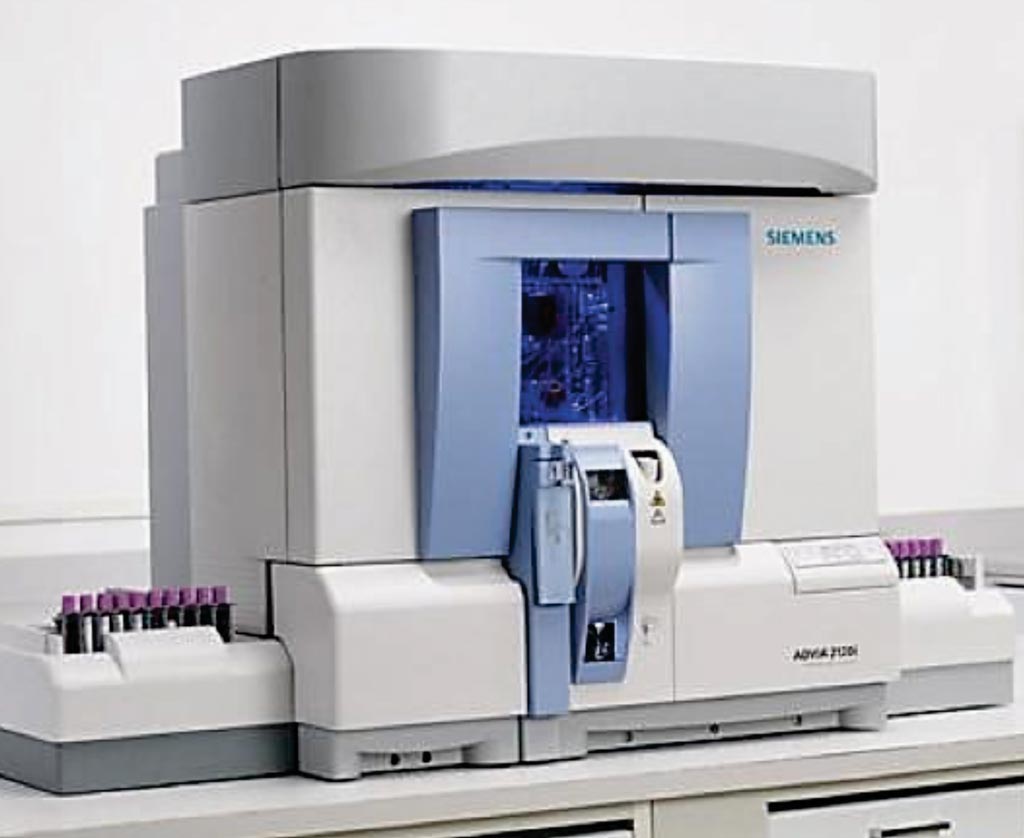Diagnostic Performance of Blood Counts Compared
By LabMedica International staff writers
Posted on 17 Oct 2017
The use of point-of-care testing is increasing, however many hematology analyzers can only determine granulocyte count without further differentiation into neutrophils, eosinophils and basophils.Posted on 17 Oct 2017
The technology of morphological assessment and counting of blood cells has advanced over recent decades, particularly in the white cell lineage, with concomitant benefits in relation to diagnosis, prognosis and management of inflammatory and malignant conditions. The full range of measurements is available on modern automated laboratory analyzers.

Image: The ADVIA 2120 hematology analyzer (Photo courtesy of Siemens Healthcare).
Laboratory scientists at the Leeds Institute of Health Science (Leeds, UK) conducted an analysis on a pseudonymised, retrospective database containing peripheral venous blood sample results between 1 January 2004 and 1 September 2013 from 21,020 patients, all of whom had received chemotherapy treatment. Blood counts were measured from EDTA venous whole blood samples obtained for the purposes of routine clinical care, and taken at any time in relation to chemotherapy delivery.
All samples were submitted for a full blood count analysis, including a five-part differential on a Siemens ADVIA 120 analyzer (Siemens Healthcare Diagnostics, Erlangen, Germany) until August 2004 and subsequently on the Siemens ADVIA 2120 analyzer; both instruments employ the same method principles. Data of interest included the eosinophil, basophil and neutrophil counts, with the sum of these three parameters being taken as the granulocyte count and lymphocyte and monocyte results were also extracted for analysis.
The team found that granulocyte to neutrophil count correlation was 0.997. The accuracy for classification into neutropenia grades using the derived equivalent granulocyte count ranges was 96.4%. Identification of results with a neutrophil count less than 1.5×109 cells/L using an equivalent granulocyte count of less than 1.69×109 cells/L resulted in sensitivity, specificity, positive and negative predictive values of 98.0%, 99.5%, 97.8% and 99.5%, respectively.
The authors concluded that their results describe the relationship between granulocyte and neutrophil counts, measured on a laboratory analyzer, in a large population of patients with malignancies and receiving anti-cancer therapies. However, this relationship must be established using a point of care testing system with a three-part differential count before considering the possibility that a granulocyte count can guide clinical decisions in the absence of a definitive neutrophil count, to reduce the frequency and severity of neutropenic complications in patients receiving cancer treatments. The study was published on October 4, 2017, in the journal Practical Laboratory Medicine.













